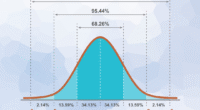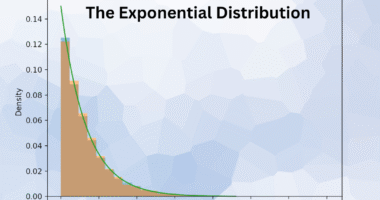In statistics, discrete probability distributions describe situations where outcomes are countable and distinct — such as the number of defects in a batch, customers arriving in a minute, or successful product tests. Understanding key discrete distributions helps in analyzing uncertainty and making informed predictions. This article explores four important types: the Hypergeometric, Binomial, Poisson, and Pascal (Negative Binomial) distributions, with simple real-life examples.
The Hypergeometric Distribution
The hypergeometric distribution applies when you draw samples without replacement from a finite population containing two types of items (e.g., defective and non-defective). The probability of success changes after each draw because the population size decreases.
Real-Life Example:
Imagine a quality inspector selects 5 items from a batch of 50, where 10 are defective. The hypergeometric distribution helps estimate the probability of finding exactly 2 defective items in that small sample.
Why it matters:
It’s widely used in quality control, lot sampling, and inventory inspections, where the same item is not replaced once chosen. It captures how outcomes change with limited sample sizes — an important aspect of real-world testing.
The Binomial Distribution
The binomial distribution describes the number of successes in a fixed number of independent trials, where each trial has only two possible outcomes — success or failure — and a constant probability of success.
Real-Life Example:
Consider a production line where each product has a 95% chance of passing inspection. If you test 20 products, the binomial distribution predicts the likelihood of having exactly 19 pass.
Why it matters:
This distribution is used in manufacturing, survey analysis, and process reliability. It’s ideal when outcomes are repetitive and independent, such as customer satisfaction surveys or pass/fail product tests.
The Poisson Distribution
The Poisson distribution models the number of events that occur within a fixed time or space interval, given that these events happen independently and at a constant average rate. It’s useful for rare or random events.
Real-Life Example:
Suppose a call center receives an average of 10 customer calls per hour. The Poisson distribution helps predict the probability of receiving 12 calls in the next hour.
Why it matters:
It’s commonly applied in operations management, telecommunications, accident studies, and defect counting. When events are random but occur at a steady rate, Poisson provides valuable insight into variation and frequency.
The Pascal and Related Distributions
The Pascal distribution, also known as the negative binomial distribution, represents the number of trials required to achieve a specified number of successes. It’s a generalization of the binomial distribution, focusing on when successes occur rather than how many occur in a set number of trials.
Real-Life Example:
A machine produces components, and you want to know how many items must be tested before finding 3 defect-free pieces. The Pascal distribution estimates the probability of achieving this after a given number of trials.
Why it matters:
It’s used in reliability testing, process optimization, and maintenance planning, where the goal is to determine how long it takes to reach a desired outcome.
Conclusion
Each discrete distribution serves a unique purpose in describing real-world randomness:
- Hypergeometric — sampling without replacement
- Binomial — fixed number of independent trials
- Poisson — random events over time or space
- Pascal — number of trials until success
By understanding these distributions, professionals in engineering, quality management, and data analysis can model uncertainty effectively and make data-driven decisions with confidence.









